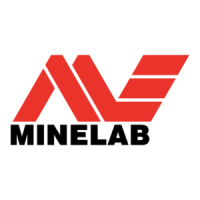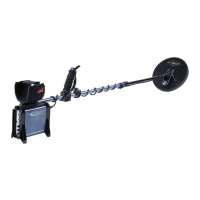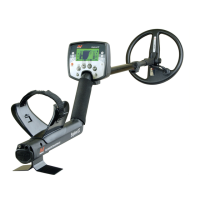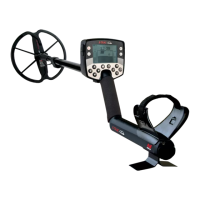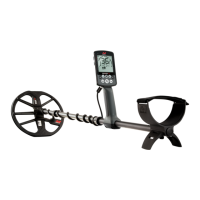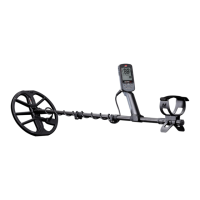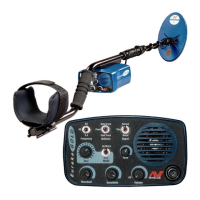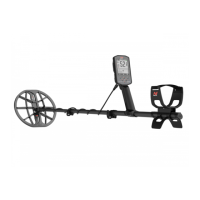4 5
Metal detectors create an electro-magnetic (EM)
field, which penetrates the ground. Because metal is
conductive it causes a change in this field. The detector
senses this change and sends a signal back to the control
box, alerting the operator.
Metal detectors can determine the size, shape and
composition of metallic objects beneath the coil.
Typically, the larger the object, the easier it is to detect.
A metal detector’s EM operating frequencies are
measured in kilohertz (kHz).
Low frequency EM fields deeply penetrate the ground,
but sensitivity to smaller targets is low. High frequency
EM fields have less depth, but sensitivity to small
targets is high.
The Excalibur II's multiple frequency operation provides
the advantages of both.
How Metal
Detectors Work
Single
Frequency
Dual
Frequency
Multiple
Frequencies
BBS
Broad Band Spectrum (BBS)
Most detectors on the market operate on a single or dual
frequency, ranging from 1 to 70 (kHz).
Although this technology has served the industry
well for years, Minelab has found a frequency which
works well in one area can often offer only marginal
performance when used in another location. Ground
mineralisation, trash content and target size all have an
effect on how effective a detector transmitting a single
frequency will operate.
The Broad Band Spectrum (BBS) circuit automatically
transmits 17 frequencies simultaneously. This increased
frequency range means the signal received from the
detector coil is analysed from a wide range of responses.
BBS technology allows the Excalibur II to locate targets
in the most challenging areas of high mineralisation and
trash, on the land, beach and underwater.
